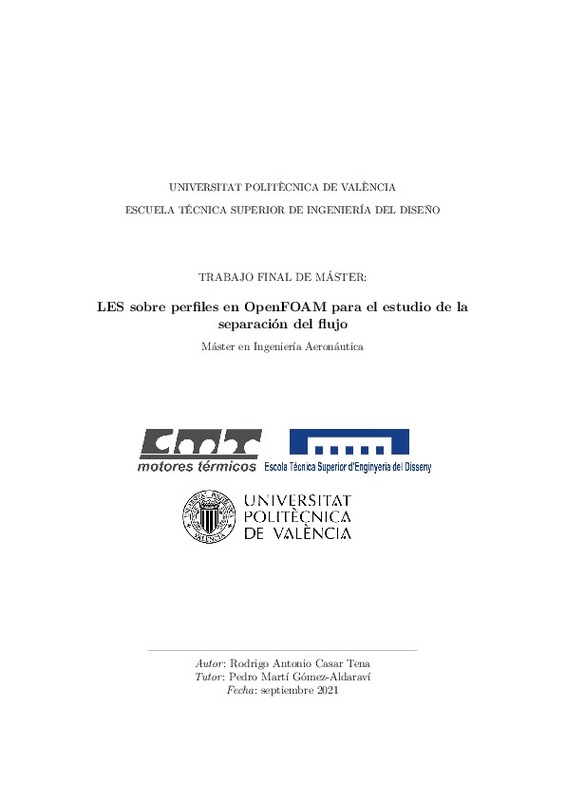JavaScript is disabled for your browser. Some features of this site may not work without it.
Buscar en RiuNet
Listar
Mi cuenta
Estadísticas
Ayuda RiuNet
Admin. UPV
LES sobre perfiles en OpenFOAM para el estudio de la separación del flujo
Mostrar el registro completo del ítem
Casar Tena, RA. (2021). LES sobre perfiles en OpenFOAM para el estudio de la separación del flujo. Universitat Politècnica de València. http://hdl.handle.net/10251/173689
Por favor, use este identificador para citar o enlazar este ítem: http://hdl.handle.net/10251/173689
Ficheros en el ítem
Metadatos del ítem
| Título: | LES sobre perfiles en OpenFOAM para el estudio de la separación del flujo | |||
| Autor: | Casar Tena, Rodrigo Antonio | |||
| Director(es): | ||||
| Entidad UPV: |
|
|||
| Fecha acto/lectura: |
|
|||
| Resumen: |
[ES] Este Trabajo Final de Máster, basado en la mecánica de fluidos computacional, explora las bondades de las Large Eddy Simulation (LES) para captar, mediante el software de código libre OpenFOAM, la separación de flujo ...[+]
[EN] This Final Master¿s Thesis, based on computational fluid mechanics, explores the benefits of Large Eddy Simulation (LES) to capture, through the open source software OpenFOAM, the separation of flow in aerodynamic ...[+]
|
|||
| Palabras clave: |
|
|||
| Derechos de uso: | Reconocimiento (by) | |||
| Editorial: |
|
|||
| Titulación: |
|
|||
| Tipo: |
|
recommendations
Este ítem aparece en la(s) siguiente(s) colección(ones)
-
ETSID - Trabajos académicos [8898]
Escuela Técnica Superior de Ingeniería del Diseño







